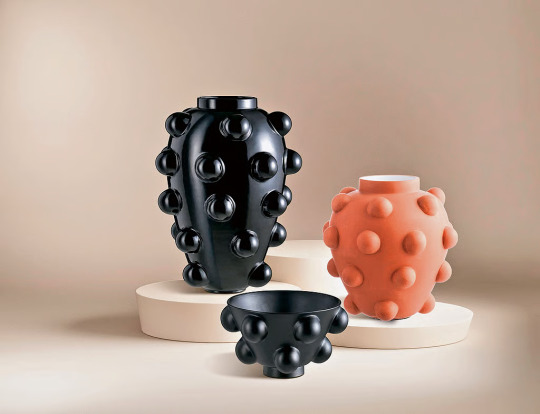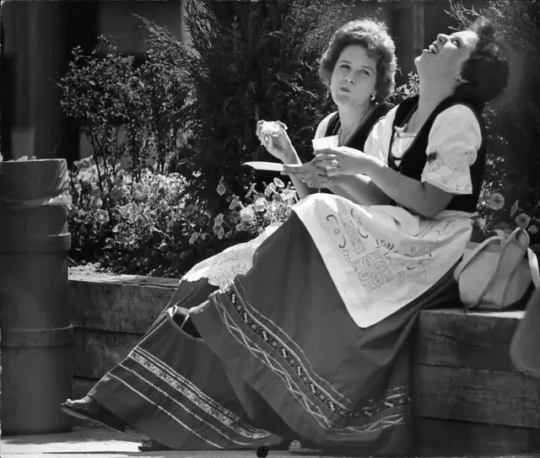Don't wanna be here? Send us removal request.
Text

The ancient palmenti of Castiglione di Sicilia
In the medieval village of Castiglione di Sicilia, narrow stone streets wind upward to reveal carved lava rock basins where generations of winemakers once crushed grapes by foot. These palmenti—primitive wineries carved directly into volcanic stone—date back to the 16th century and remained in use until the 1960s. Today, local guide Maria Torrisi leads visitors through these archaeological sites, occasionally unlocking private family palmenti preserved in centuries-old homes.
“My grandfather would bring our entire family here each September,” Maria explains, demonstrating how feet would crush grapes in the upper basin while juice flowed through channels to fermentation chambers below. “The children would play in the leftover grape skins, coming home purple from head to toe.”
Source: World Day
0 notes
Text

The colour library at the historic Orsoni glass factory in Venice.
The Orsoni glass factory—officially known as Orsoni Venezia 1888—is a legendary mosaic furnace located in the Cannaregio district of Venice. Founded in 1888 by Angelo Orsoni, it’s the last active furnace in Venice allowed to operate with live fire, and it still uses traditional techniques to produce Venetian smalti (colored glass mosaics) and 24-karat gold leaf mosaics in over 3,500 shades.
Orsoni’s mosaics have adorned iconic landmarks like the Basilica di San Marco in Venice and Gaudí’s Sagrada Família in Barcelona
Source: The Post
0 notes
Text

A grand piano at the Museum and Library of Music, in Bologna, Italy.
Source: News Decoder
6 notes
·
View notes
Text

San Servolo island in Venice
Just a short vaporetto ride from Piazza San Marco, the island was originally home to Benedictine monks as early as the 8th century, later transformed into a military hospital and then a psychiatric asylum until 1978.
Today, San Servolo has been restored and repurposed. It hosts the Venice International University, the Ca’ Foscari International College, and a Museum of Madness that preserves the island’s psychiatric history. The island also features lush gardens, historic architecture, and spaces for exhibitions, conferences, and artist residencies.
Source: Alessandria Today
8 notes
·
View notes
Text

Fresh, handmade tortelli by Dario Monni, Chicago
Source: Crain's Chicago Business
1 note
·
View note
Text

Equestrian themed Gucci's scarf, late 1960s
Source: Style
0 notes
Text

The Sheikh Zayed Grand Mosque in Abu Dhabi.
To bring the extraordinary Abu Dhabi Grand Mosque to life, the finest resources from all over the globe were selected. Gold, crystals, marble, ceramics, and other precious stones were imported from countries like New Zealand, Morocco, Egypt, Turkey, Greece, Pakistan, Italy, Germany, Austria, China, and India.
Source: WeBuild
#abu dhabi#mosque#sheikh zayed#religious architecture#united arab emirates#islam#islamic architecture
0 notes
Text

The iconic vase shape of Rometti, reinterpreted for the new Opulin collection. Founded in 1927, Rometti is a ceramic design hub based in Umbertide, in the province of Perugia, Umbria, Italy.
Source: Indulge Magazine
0 notes
Text

The Norman Foster Foundation and Porsche have installed a shimmering modular transportation hub at the 2025 Venice Architecture Biennale.
The sports car manufacturer's designers and the architects have collaborated on the future of urban mobility. Named Gateway to Venice’s Waterways, the installation is a component of Porsche's design and art program, "The Art of Dreams."

Source: WA
3 notes
·
View notes
Text

Donald Trump, Jannik Sinner, Diego Maradona, and Lautaro Martinez as nativity figurines in Naples.
Naples' famous nativity scene tradition has embraced contemporary figures, turning them into handcrafted statuettes displayed in the artisan shops of San Gregorio Armeno. Among the latest additions are tennis star Jannik Sinner, football legends Diego Maradona and Lautaro Martinez, and even U.S. President Donald Trump.
Source: The Drink Business
#naples#nativity#figurines#napoli#presepe#jannik sinner#diego maradona#lautaro martinez#donald trump#san gregorio armeno
1 note
·
View note
Text

Italian superyacht Akula entering Bristol waters
Akula is described as “a luxury private expedition yacht designed with cutting-edge technologies, ensuring unparalleled safety and exceptional seakeeping performance”.
The boat is believed to be owned by Jonathan Faiman, the co-founder of Ocado and a former banker at Goldman Sachs.
Built at the Rossinavi shipyard in Viareggio on Italy’s northern Tuscany coast and launched in 2024, Akula is 59.4 metres in length, has a top speed of 15.5 knots, with a capacity for 10 guests and 13 crew and can spend up to 30 days at sea with a range of more than 8,000 nautical miles.
B24/7
0 notes
Text

Salt production facility in Pisa Province, Tuscany, Italy
Source: GMK Center
0 notes
Text

Dessert at Hotel Due Lune Puntaldia Resort & Golf, San Teodoro, Gallura, Sardinia, Italy.
Source: AD Italia
2 notes
·
View notes
Text

1978: Roselle and Marie Mussomeli take a break from working in a booth at the Festa Italiana on the Summerfest grounds. The festival began in 1978 as a revival of the Italian festivals in Milwaukee's Third Ward.
Milwaukee Journal Sentinel Files
0 notes
Text

Eielson Air Force Base, Alaska — The Aurora Borealis, or Northern Lights, shines above Bear Lake.
0 notes
Text

Parma hams in the aging process
Reuters
#ham#parma ham#prosciutto#prosciutto di parma#aging hams#italian cuisine#pork meat#pork#salumi#charcuterie
0 notes
Text

The colour purple has long been associated with Florence, from the Romans, who named it after an autochthonous purple lily, to Alemanno del Giunta, who brought immense wealth to the city during the Renaissance by creating purple dye from the oricella plant. Today, the colour is mostly associated with AC Fiorentina, the resident football club founded in 1926, which has been wearing its distinct purple kit since 1929. But Fiorentina is not the only football club in the city sporting viola. There is another, too: the American football team Guelfi.
The Guelfi are named for one of the two factions in the Guelph and Ghibelline Wars of the Middle Ages, with the Guelphs supporting the Pope and the Ghibellines the Holy Roman Emperor. Florence was loyal to the Pope, but the club’s origins are not so ancient. During the height of Americana in Italy, Florence boasted two teams. The Apaches, founded in 1983, were first, but a rift in 1986 prompted some of the personnel to found the aptly named Renegades. The Apaches ceased operations in 1994 after two seasons in the top division, and the Renegades followed suit in 1997. Florence was left without an American football team, but in 2000 members of the Apaches and Renegades joined forces, and the Guelfi rose from the ashes of their predecessors.
In 2022 the Guelfi won their first Italian Bowl
The Florentine
0 notes